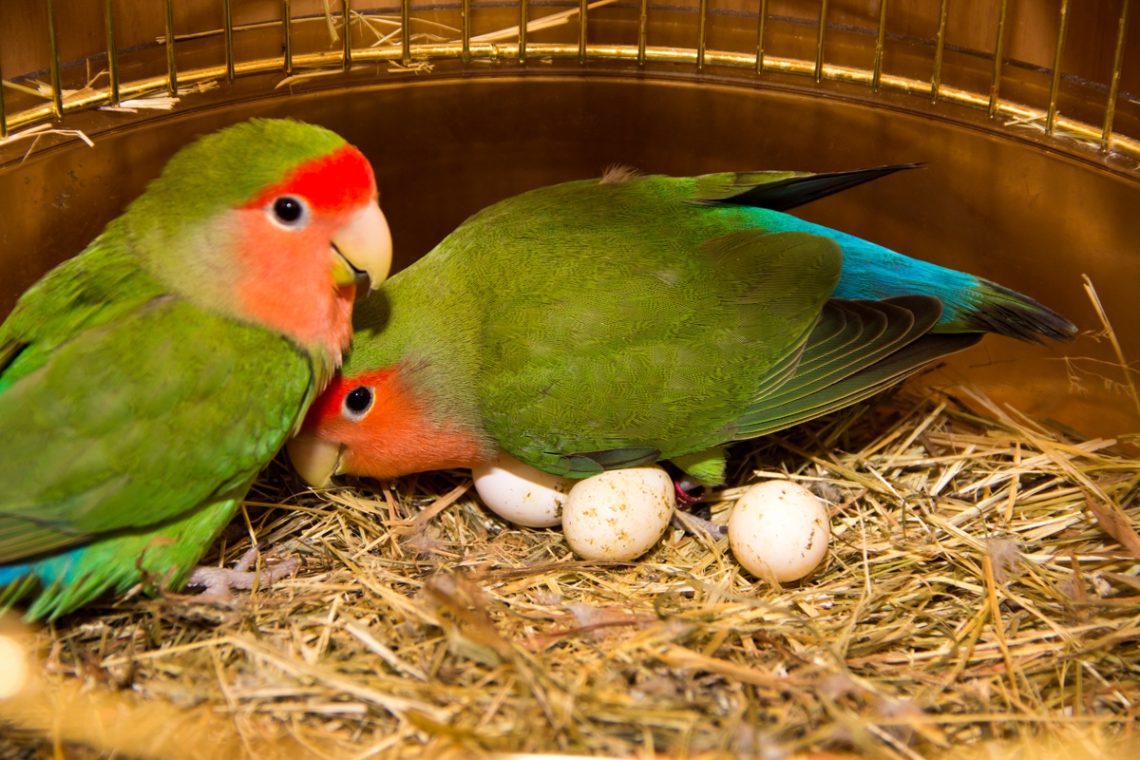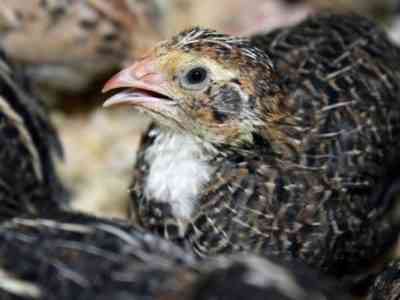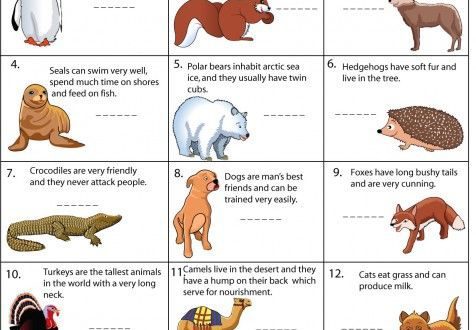
Lovebird parrots: care, maintenance, reproduction
Lovebird parrots are the very birds that are ideal for those who want to have birds, but do not yet have experience in this. They are unpretentious, beautiful, live 10 years or longer. In a word, excellent pets! However, this does not mean at all that you can keep them as you like. It is simply necessary to get acquainted with all the nuances.
Contents
Lovebirds: proper care of them
So, What can you say about caring for lovebirds?
- The first thing to talk about is feeding. Ready-made mixtures are quite suitable for lovebirds, which are intended for parrots of any breed. That is, universal food. It is advisable to sift it before serving the pet. But, of course, it is necessary to treat the bird with fruits, vegetables, oats, germinated wheat. Dandelion leaves and parsley are also excellent additions. But candied fruits, persimmons, avocados, mangoes, papaya, fruit pits, onions with garlic, fish, seafood and meat should not be given. Also banned are sweet, fatty, spicy foods. It is preferable to treat the pet with crushed egg shells. It is believed that it fully compensates for the deficiency of minerals. Just before giving this useful supplement, it is advisable to ignite it in a frying pan or boil it.
- How much food to give the bird? The norm is 2 or 3 teaspoons per day. It should be noted that overeating will not have the best effect on lovebirds, so this rule should be remembered.
- Do lovebirds talk? An adult bird cannot be taught to anything. But if a chick fell into the hands of a person, the chance that it will be possible to raise an interlocutor out of it is great. However, it should be noted that a representative of this breed is unlikely to master more than 10 words. Therefore, you should not torment your ward with constant tedious training. Let them be short and cheerful for the bird.
- You definitely need to allocate a couple of weeks for the bird to adapt after it finds itself in a new home. That is, at this time it is advisable to approach only if necessary, even despite the fact that lovebirds are famous as sociable birds. Over time, the pet will want to communicate, he will have an appetite, he will become more cheerful. To begin with, it is worth talking with him for 10 minutes, gradually increasing this time. Then you can give him food from your hands. And only when he gets used to it, you can take the bird in your arms, not earlier.
- Should you bathe parrots? Lovebirds really love to swim. However, they do it themselves. The task of the owner is simply to install a bath of water. The pet will do the rest.
- Buying fruit holders is a great idea if you want to encourage your pet to eat more vitamins. Special holders captivate the birds, and they are happy to start the meal.
- Lovebirds should definitely be let out to fly more often. Ideally, daily, because due to low mobility they can acquire a lot of diseases..
Correct content parrots
About content can be said as follows:
- lovebird parrots, despite the fact that they are tiny, they need in a vast space. According to specialists, optimal cell size for one bird it is 80x30x40 cm. If man plans to have two lovebirds – and this happens almost always – he better get a cage dimensions 100x40x50 cm. Larger, of course, you can, but obviously a smaller one not worth it. And, of course, the more birds in a cage, the larger it should be.
- Now on the market to the attention of buyers are presented cells of the most bizarre forms. However design tricks rather negatively affect the birds. Better rectangular or square shape no one came up with anything. It is also desirable to select models with horizontal bars, distance between which will be centimeter or one and a half centimeters.
- That as for the material, it is preferable solid metal or nickel. This material last as long as possible, covered with rust. At the same time, such the cage will be easy to disinfect. BUT here wooden parts are undesirable – they are not completely washed off. disinfectants, they are bad tolerate moisture.
- By the way about disinfectants: their really important to use, so how the health of lovebirds is far from strong. Cage must be washed at least once a a week. It is necessary for this use not only the disinfection, but also boiling water, which excellent disinfectant. Continuing the theme hygiene, it is worth noting that the best choose cage models with retractable bottom – they are easiest to clean. What touches the dishes, then you need to wash it every day.
- It’s important good place to install cells. Surely it must be protected from drafts, which are feared in general, all breeds of parrots, and even lovebirds in particular. Also the bird should have enough sunlight, however, direct sunlight is constantly should not fall on the cage either. Batteries and other heat sources are also worth keep away from the cage. Important and establish permanent contact between pet and owners. Since lovebirds are sociable birds – they should live where they are constantly someone is located. Recommended also wisely approach the issue of installation height cells – it is desirable that it placed at eye level.
- within cells need to arrange drinkers, feeders, perches. Diverse toys and ladders also do not interfere – at a time when the owners will not be at home, restless lovebirds will much easier to deal with loneliness. “Crawling” climbing plants – excellent decor idea. These birds just love climb over them!
- Desired air temperature – from +18 to +25 degrees. Still, one should not forget that lovebirds are heat-loving birds. However, they can not overheat!
- World must be soft, otherwise the birds get scared. During autumn and winter without no artificial lighting – parrots will be very missed light at this time.
How to determine correctly sex of lovebirds
Как to determine where alone, And where – male?
- Right Away it is worth noting that taking a parrot by the paws and turn it over – bad idea. Lovebirds in this case start to be very afraid. Especially females that begin to behave nervously.
- At all females are indeed more emotional. They are mobile, sometimes even grumpy, are difficult to get into hands. And the last relevant even if the owner they live together for a long time years! males, tend to be more balanced accommodating and good-natured.
- Now Let’s talk about external characteristics. As usual in nature, males most often larger than females. In the case of lovebirds this is also true, but the difference will be small. So small that, quite possibly, the inhabitant of it even won’t determine. Therefore, such a method difficult to call effective.
- Some recommend paying attention to the head birds. So, the boys have it a little elongated, flat, has a little flattened occiput. Skull girls more domed. However, it’s not worth it write off individual features of each individual. Therefore, this method is not undeniable.
- А here’s the look of the beak is worth a closer look. In males the beak is always large and bright. Females lose noticeably in this regard.
- take a closer look you can and to, so to speak, the bottom of the birds. At female hip spacing bones is usually a centimeter, and in males – half a centimeter.
- Как sitting bird? Boys are often served forward. Girls, especially if their shoulders are far from one brood – have a habit of spreading widely quotes.
Reproduction of lovebirds: what to know
А Now let’s talk about the nuances that worth knowing about breeding unrepentant:
- Important the right way to choose the right one time for reproduction. Counts, which is most suitable for this goals the beginning of spring or the second part autumn period.
- That before choosing a partner, it is important to consider that a bird is unlikely to become older than 4 years parent. According to experts, lovebirds over a specified age usually infertile. At the same time, individuals younger the years are still weak enough for to become parents. Should be given attention and compatibility of partners in character – just like that It’s not just for humans! If a the birds are constantly swearing, it is unlikely that they want to have a common offspring. It’s important take into account what to cross with each other direct relatives in case of lovebirds can not be categorically.
- Birdie must, before becoming a parent, eat a little. That is, a small fat deposition is welcome. However, of course it shouldn’t become too fat – it suits no one benefit. The ration should be maximum balanced nutrients. It is especially recommended to give greens.
- Homemaking nesting is another important point. It should be placed on the top parts of the cell. It is believed that the height should reach at least 20-25 cm. Bottom must be square shape, and its sides are better to choose such that they are 17 or 18 see Entrance is not make it too big preferably its diameter was 5 or 6 cm. Position the entrance should be retreating 2-4 cm from the bottom of the roof. perch under entrance – an excellent solution, and under it, at a height of 2-4 cm in relation to the floor, rail needs to be installed. On the bottom it is desirable to make some indentation – then the eggs will not roll. And to nesting was comfortable to clean, The roof needs to be able to fold down.
- Disinfection must always be respected! It concerns and nesting places. It needs to be processed how it will be posted in the cage. Processing should include boiling water and disinfectant.
- It is believed, that hanging nesting stimulates parrots to breed. That’s why It is recommended that you do this on the same the same period for the birds to develop kind of regimen. RџSЂRё it breeds more than twice a year These birds are not worth it. It is believed that because of this, their body exhausted, and the chicks become extremely weak.
- When the female is incubating the eggs, it is necessary to create suitable terms. Thus, the ideal humidity in indoors during this period – 50-60%, the best temperature – from 18 to 20 degrees.
- What should be normal eggs? White with light gray or milky shade, with matte shell. If the shell glitters, has a yellow tone and even spots, This means the eggs are not fertilized. Latest it is better to immediately remove from the masonry. But what what to do if all the eggs are empty? After all Sometimes it happens! In such a case, the female it’s better to let them “sit out”, otherwise her cycle will go astray.
- hatching the female is engaged on average from 19 to 26 days. In one clutch may be an average of 4 to 6 eggs. Bye birdie incubates offspring, not worth it bother. Cleaning is best done in the time when she is distracted by meal. It is better not to touch the masonry at all Or touch at a minimum.
Certainly, about lovebirds there are also negative reviews – to some people they seem noisy, sloppy, rambunctious. However, according to experts, a similar impression is made in largely due to the fact that people do not know how deal with such birds. Though they are suitable for beginners, but require specific content scenario. We hope that our article will help to gain useful knowledge in this issue.





